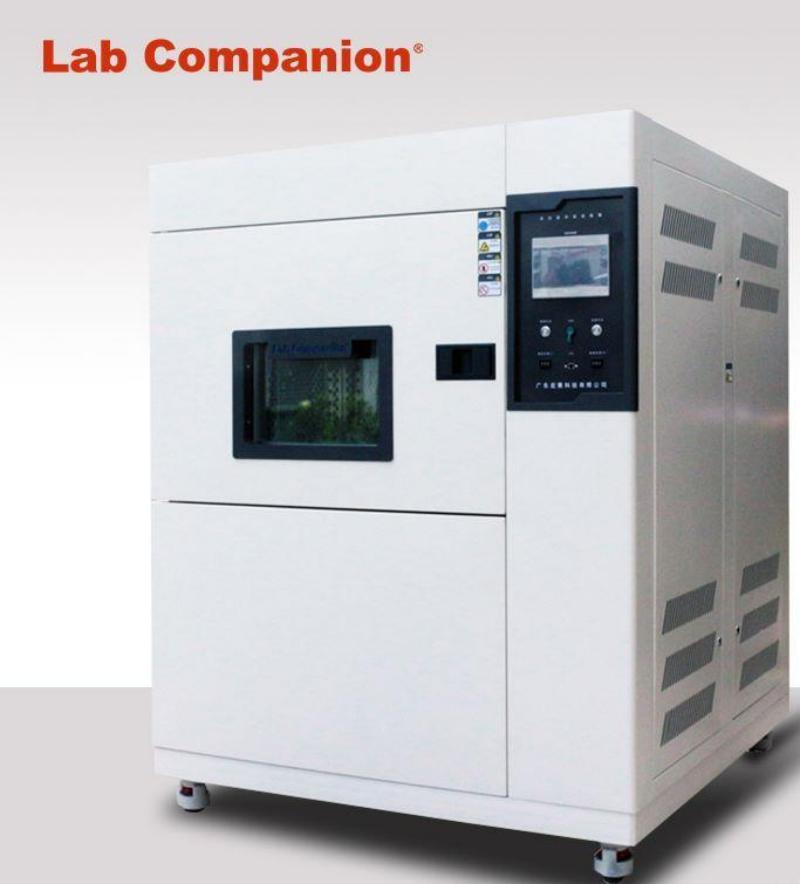Свяжитесь с нами по электронной почте :
info@labcompanion.cn-

-

Запрос звонка :
+86 18688888286
Испытание на термоциклирование (TC) и испытание на термический удар (TS)
Испытание на термоциклирование (TC):
В жизненном цикле продукта он может столкнуться с различными условиями окружающей среды, из-за чего продукт оказывается в уязвимой части, что приводит к его повреждению или выходу из строя, а затем влияет на надежность продукта.
Серия циклических испытаний при высоких и низких температурах проводится при изменении температуры со скоростью изменения температуры 5–15 градусов в минуту, что не является реальным моделированием реальной ситуации. Его цель состоит в том, чтобы приложить нагрузку к испытуемому образцу, ускорить процесс старения испытуемого образца, чтобы испытуемый образец мог вызвать повреждение системного оборудования и компонентов под воздействием факторов окружающей среды, чтобы определить, правильно ли спроектирован испытуемый образец или изготовлено.
Общие из них:
Электрическая функция продукта
Смазка портится и теряет смазку.
Потеря механической прочности, в результате чего появляются трещины и трещины.
Разрушение материала вызывает химическое воздействие.
Область применения:
Тест моделирования среды модуля/системы
Испытание модуля/системы на прочность
Ускоренное стресс-тестирование печатных плат/PCBA/ паяных соединений (ALT/AST)...
Испытание на термический удар (TS):
В жизненном цикле продукта он может столкнуться с различными условиями окружающей среды, из-за чего продукт оказывается в уязвимой части, что приводит к его повреждению или выходу из строя, а затем влияет на надежность продукта.
Испытания на высоко- и низкотемпературный удар в чрезвычайно жестких условиях при быстром изменении температуры со скоростью 40 градусов в минуту на самом деле не моделируются. Его цель состоит в том, чтобы приложить к испытуемому образцу сильную нагрузку, чтобы ускорить процесс старения испытуемого образца, чтобы испытуемый образец мог вызвать потенциальное повреждение системного оборудования и компонентов под воздействием факторов окружающей среды, чтобы определить, правильно ли испытуемый образец. спроектированы или изготовлены.
Общие из них:
Электрическая функция продукта
Структура изделия повреждена или прочность снижена.
Растрескивание олова компонентов
Разрушение материала вызывает химическое воздействие.
Уплотнение повреждения
Технические характеристики машины:
Диапазон температур: от -60°C до +150°C.
Время восстановления: < 5 минут
Внутренние размеры: 370*350*330 мм (Д×Ш×В)
Область применения:
Тест ускорения надежности печатной платы
Ускоренное испытание на ресурс электромодуля автомобиля
Ускоренное испытание светодиодных деталей...
Влияние изменений температуры на продукты:
Слой покрытия компонентов отпадает, герметизирующие материалы и герметики трескаются, трескается даже уплотнительная оболочка, происходит утечка наполнителей, что приводит к снижению электрических характеристик компонентов.
Изделия, состоящие из разных материалов, при изменении температуры изделие нагревается неравномерно, что приводит к деформации изделия, растрескиванию герметизирующих изделий, разрушению стекла или стеклянной посуды и оптики;
Большая разница температур приводит к тому, что поверхность изделия конденсируется или замерзает при низкой температуре, испаряется или плавится при высокой температуре, а результат такого многократного воздействия приводит к и ускоряет коррозию изделия.
Экологические последствия изменения температуры:
Разбитое стекло и оптическое оборудование.
Подвижная часть застряла или ослабла.
Структура создает разделение.
Электрические изменения.
Электрический или механический сбой из-за быстрой конденсации или замерзания.
Излом зернистый или полосатый.
Различные характеристики усадки или расширения разных материалов.
Деталь деформирована или сломана.
Трещины на поверхностных покрытиях.
Утечка воздуха в защитном отсеке.
